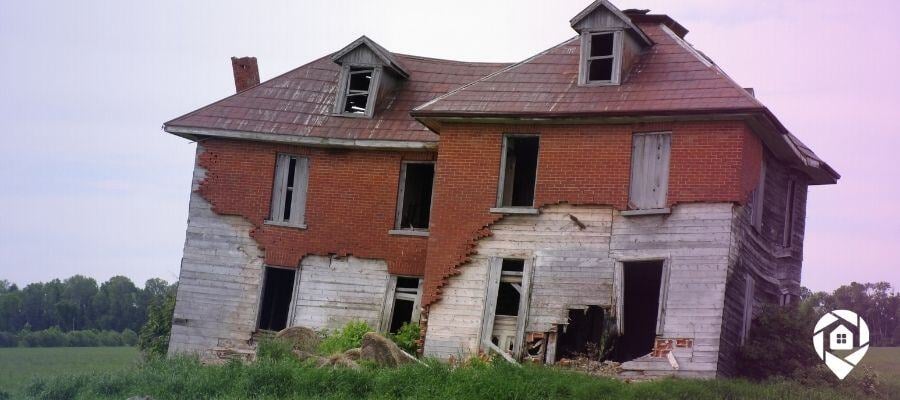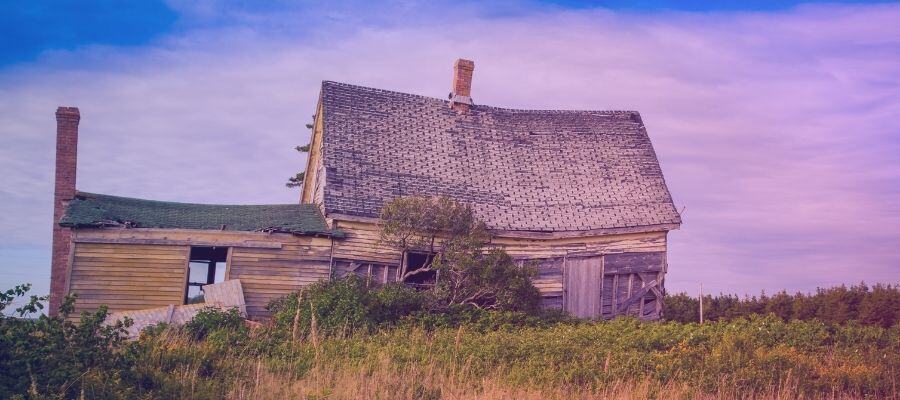
What Are Some Critical Red Flags in Flipping Houses?

For many real estate investors, venture into flipping houses is an exciting and lucrative strategy. However, understanding the home inspection process is inherently essential. As experienced house flippers would note, not all flips are likely to be profitable if you miss out on key red flags. In this blog, we will discuss some of the potential dangers that home inspectors often notice when surveying a property.
Understanding House Flipping
Flipping, in its essence, is a quick-profit strategy where real estate investors purchase a property for as low as possible, usually at a sale price well below its market price, renovate it, and then sell it for a significantly higher price. While the potential gains can be substantial, so are the risks. As the seasoned investors would tell you, no part of the home buying process should be overlooked, least of all the home inspection.
For our full guide on the ins and outs of flipping houses check out this article.
The Role of Home Inspectors in House Flipping
Why is a home inspection important when considering a house for flipping? As a real estate investor, you're not just buying a house; you're investing in its potential. And no one can present you with a clearer picture of what that looks like than a certified home inspector. In addition to the initial purchase price, investors must also consider the cost of renovations, the time it will take to complete them, and how this will affect the final sale price.
You can go the route of traditional home inspectors or you can have your general contractor come walk the house with you and point out some of the obvious red flags. However, it's not always possible to walk a potential flip before buying it. With houses like that there is always an inherent risk since you do not know what you are buying. If the price is low enough and the potential ARV is high enough as long as there is not major structural damage the flip may pay off.
Red Flags to Look For in a Potential Flip
Let's delve into some of the biggest red flags that home inspectors typically advise real estate investors to look out for when they are flipping a house.

Structural Issues
Structural issues are arguably the most critical red flag when flipping houses, and they can turn a seemingly profitable deal into a financial disaster. Understanding the scope and severity of structural problems is essential, as these can entail extensive and expensive repairs that might exceed your budget or timeline. Here’s a closer look at what to watch out for:
1. Foundation Cracks and Shifts:
The foundation is the backbone of any house, and any damage here can lead to a cascade of other problems. Cracks in the foundation, especially those wider than a quarter-inch, can indicate significant settling or shifting of the building. This may require underpinning or other complex repairs to stabilize the home, which can be costly and time-consuming. Horizontal cracks, in particular, can suggest serious issues like soil movement or poor construction practices, making them a red flag that demands immediate attention.
2. Uneven or Sloping Floors:
Floors that are not level can be a telltale sign of structural issues. This could indicate problems with the foundation, floor joists, or load-bearing walls. Uneven floors might also be symptomatic of past water damage that has weakened the substructure. Fixing uneven floors often involves jacking up the house and reinforcing or replacing key structural elements, which can be a significant undertaking. In older homes, sloping floors might also be due to natural settling over time, but this still requires a careful assessment to determine the extent of the problem.
3. Crumbling or Deteriorating Masonry:
Masonry work, such as brick or stone walls, can suffer from weathering, poor construction, or even faulty materials. When you encounter crumbling masonry, it could mean that the building’s integrity is compromised. Repointing (replacing the mortar between bricks) or even reconstructing parts of the wall might be necessary, which can add a substantial cost to your renovation budget. Additionally, deteriorating masonry might allow water intrusion, leading to further damage and mold growth.
4. Sagging or Bowed Walls:
Walls that are bowing or sagging are a serious concern. This could be due to foundation issues, poor construction techniques, or even termite damage. These problems can be difficult to fix, often requiring significant reconstruction to ensure the building is safe and stable. The cost of repairing or replacing damaged walls can quickly escalate, potentially making the flip unprofitable.
5. Compromised Roof Structure:
While not directly part of the foundation, the roof structure is crucial to the overall integrity of the house. Issues like sagging rooflines, missing or damaged trusses, or widespread rot in the rafters can indicate serious structural problems. These issues not only pose a risk to the safety of the home but can also lead to leaks and water damage that might require further extensive repairs.
Mitigating the Risks:
If you encounter any of these structural red flags, it’s vital to bring in a structural engineer or a highly experienced contractor to assess the situation before proceeding. In some cases, the cost of repairs might be negotiable with the seller, but more often than not, these issues should make you reconsider the investment. Additionally, understanding the 70% rule—where your total investment in the property (purchase price plus renovation costs) should not exceed 70% of the After Repair Value (ARV)—can help you determine if the flip is worth the risk.
Structural issues are not just a financial burden; they can also extend the timeline of your flip, complicate the renovation process, and even affect the resale value. Therefore, it’s crucial to weigh these factors carefully before committing to a property with potential structural problems.
Old or Damaged HVAC Systems
When flipping a house, the HVAC (Heating, Ventilation, and Air Conditioning) system is often an overlooked component, but it plays a crucial role in the home's overall comfort, energy efficiency, and resale value. An outdated or malfunctioning HVAC system can be a significant red flag, potentially leading to unexpected expenses and complications. Here’s what you need to consider:
1. High Replacement Costs:
HVAC systems are one of the most expensive components of a home to replace. If the system is old or not functioning correctly, the costs can quickly add up. Replacing an entire HVAC system, including the furnace, air conditioning unit, and ductwork can range from $5,000 to $10,000 or more, depending on the size of the home and the complexity of the installation. These expenses can eat into your profit margin if not accounted for in your initial budget.
2. Energy Efficiency Concerns:
Older HVAC systems are often less energy-efficient than newer models. This not only means higher utility bills for potential buyers but also could lower the overall value of the property. Energy efficiency is a significant selling point in today's market, and homes with modern, efficient HVAC systems are more attractive to buyers. Upgrading to an Energy Star-rated system can be a wise investment, increasing the home's appeal and potentially allowing you to sell it at a higher price.
3. Compliance with Modern Building Codes:
HVAC systems that are outdated may not meet current building codes, which could be a stumbling block during the inspection process. If the system is not up to code, you may be required to replace or upgrade it before selling the home, adding another layer of expense and potential delays to your flip. Ensuring that the HVAC system is compliant with local regulations is crucial to avoid any last-minute surprises.
4. Potential Hidden Problems:
An old HVAC system might be indicative of deeper issues within the home. For example, outdated ductwork could be leaking air, reducing efficiency, and leading to uneven heating or cooling throughout the house. Additionally, older systems might not be properly maintained, leading to problems like dirty filters, clogged coils, or malfunctioning thermostats. These issues might not be immediately apparent but can cause significant problems down the line if not addressed.
5. Health and Safety Concerns:
A malfunctioning HVAC system can pose health and safety risks, especially if it involves a gas furnace. Issues like carbon monoxide leaks, poor ventilation, or mold growth within the system can be hazardous to the occupants. Ensuring that the HVAC system is in good working order is not just about comfort; it's also about ensuring the safety of future homeowners. Replacing an outdated system can eliminate these risks, making the home a safer place to live.
While an old or outdated HVAC system is a significant red flag, it's one that can often be addressed with proper planning and budgeting. By recognizing the potential costs and benefits, you can make an informed decision about whether to proceed with the flip and how to maximize your return on investment.
Water Heater Problems
A faulty or outdated water heater can be a major red flag when flipping houses. Replacement costs can range from $800 to $3,000, and issues like leaks, corrosion, or inefficient heating can lower the home’s value. Always check for proper installation, adequate capacity, and potential leaks to avoid unexpected expenses and ensure the property meets buyer expectations.
Conclusion: Buying a Flip Gone Wrong
In conclusion, flipping houses can be a profitable venture in the real estate investing world as long as you don't ignore the basics like home inspection. Make sure to loop in a professional to understand the true potential of your investment if you are less familiar and steer clear of unforeseen costs. After all, the cost of a home inspection is indeed a small price to pay if it helps you avoid a bad investment.

About Samantha Ankney
Samantha is the Social Media Manager at DealMachine, where she oversees all social media strategies and content creation. With 3 years of experience at the company, she originally joined as a Media Specialist, leveraging her skills to enhance DealMachine's digital presence. Passionate about connecting with the community and driving engagement, Samantha is dedicated to sharing valuable insights and updates across all platforms.





